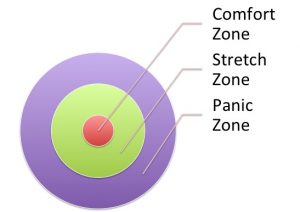Will Sustainability be the ‘new normal’ post-pandemic?
There’s an old saying ‘don’t let a crisis go to waste’ and there are plenty of voices calling for the current disruption to be used to build a new, better future. Alongside a myriad of activist voices, we’ve had a heavyweight study from Oxford University making the case for a green stimulus. And we’ve also had welcome statements from two UK Government ministers for whom I rarely find cause to praise:
It will be the duty of every responsible government to see that our economies are revived and rebuilt in a way that will stand the test of time. This means investing in industries and infrastructure that can turn the tide on climate change. ~ Dominic Raab, UK Foreign Secretary
I’m going to be saying more about that shortly because active transport — keeping people off public transport and getting to work under their own steam — that could be a very important part of this recovery as well. ~ Grant Shapps, Transport Secretary
But will these good intentions turn into concrete action? I remember similar talk during the aftermath of the of the 2008 banking crisis (or 9/11 for that matter) and yet there was no noticeable step change in behavioural attitudes (aside from restrictions on bank lending to mitigate the chances of another credit bubble). We largely went back to what we knew.

A few years ago I came across the above model which I think helps us understand the psychology of uncertainty. We spend most of our time in the comfort zone – just think of your normal daily routine where most things happen without you having to make a decision. Every so often we are dragged into the stretch zone where real change happens – say major renovations on your house. Few of us like being in the stretch zone for long – we crave the comfort zone again, eg finding your new routine in your remodelled house. But outside this is the panic zone where discomfort becomes intolerable and we can scrabble back to our comfort zone for better or worse.
Few people alive today were alive when the last major pandemic swept the globe. For the vast majority of us, this is, to use that suddenly ubiquitous phrase, unprecedented. We are constantly teetering on that boundary between stretch and panic and, personally speaking, it’s not a pleasant experience. So how do we create a new normal and avoid a rush back to business as usual when the pandemic recedes?
One approach is to sustain low-carbon lockdown behaviours which have become normal under lockdown. Teleworking used to be the exception rather than the rule, but it can easily become the new normal if we keep acting as if it is (eg persuade the boss to decree that certain update meetings are done via Zoom in future). Cycle sales are going through the roof and a number of farsighted local authorities around the world are building pop-up cycle lanes on major routes to keep those newbies safe (I’m campaigning for this in my City). These can be used as a trial run for permanent routes to keep those new daily patterns going.
These examples move lockdown behaviour from the stretch zone into the comfort zone. But we need to be careful not to push people into the panic zone by lumping too much on them at a very emotionally fraught time. You may feel you’re doing the right thing, but you may not get the results you want. As always, we must value the emotions of our audience more than our own, because that’s how to bring people with us. Making Sustainability comfortable will be the key to success.

